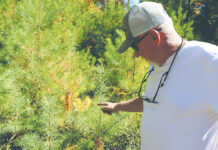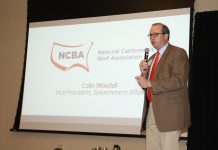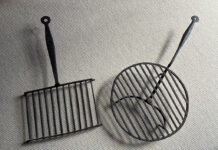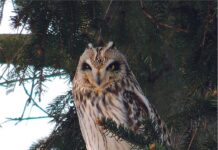By Chris Zoller and Garth Ruff
Most of Ohio is abnormally dry and more than half of the state has been designated as being in moderate drought. The U.S. Drought Monitor maps compare drought conditions from May 30 and June 6 (the two latest maps available at the time of writing this article). Notice how the map changed (more areas of yellow) in Ohio in just one week.
If these dry conditions continue, pasture quality will decline rapidly. On May 28, roughly 75% of Ohio pastures were rated Good to Excellent, with the majority as Good, according to USDA National Agricultural Statistics Service. It would be reasonable to expect that across most of Ohio Poor and Very Poor pasture conditions could be a new reality without significant rainfall.


Management suggestions
While we can’t control when, where, or the amount of rainfall, there are management practices you can take to minimize damage to pastures, while maintaining cattle health and growth. Please consider the suggestions provided below:
• Do not overgraze. Plants require leaf area to capture sunlight to complete the photosynthesis process. Overgrazing will diminish available leaf area and impact root reserves needed to maintain plant growth.
• Depending upon forage species, plants should be approximately 8 to 10 inches tall before being grazed — and follow the “take half, leave half” rule.
• Consider using temporary posts and fencing to reduce paddock size to improve utilization with more frequent pasture rotations.
• Walk your pastures to observe and eradicate any poisonous plants. When pastures are short, weeds have a chance to outcompete grasses. The goal is to prevent any weeds from developing and then spreading seed.
• Be prepared to apply nitrogen — when rain is in the forecast. Applying nitrogen without sufficient moisture will result in volatilization.
• Evaluate available alternative feeds. Whole shelled corn is still an economically viable option to supplement energy given the price of cattle today. Talk to your nutritionist to match animal needs based on stage of production.
• Buy hay? Seems odd to consider buying hay for most producers in June. Depending on the cost to do so, buying hay could provide a short-term solution. However, if drought persists, the value of hay will certainly increase.
• Feed hay. If you have hay reserves from 2022, this may be a good opportunity to utilize some of those bales, especially if they have been stored outdoors as their quality is only going to further deteriorate.
• If feeding hay or supplementing cattle, a sacrifice lot or heavy use pad could be the best place to do so depending on the availability of water.
• Consider early weaning calves. Calves that are at minimum 90 days of age can be weaned if feed resources are of short supply. Wean calves onto a predominantly hay based diet and slowly introduce and increase the percentage of grain. Monitor body condition, if marketing feeder cattle, be careful to not over condition.
• Cull part of the herd, especially those with health issues, difficult breeders, poor udders, feet and leg problems and those cows that are a Body Condition Score of 4 or less. It is a challenge to add body condition often in a good year to consistently thin cows. Culling cows for any of the above criteria allows more forage for higher producing animals.
Summary
The forecast doesn’t look promising for immediate relief from dry conditions. We encourage producers to consider the management strategies outlined in this article and use this situation to develop a management plan for future similar scenarios. Please contact your local Extension professional for additional assistance.
(Chris Zoller is an agricultural extension educator and county Extension director in Tuscarawas County. Garth Ruff is a beef cattle field specialist for OSU Southeast Region Extension office.)












